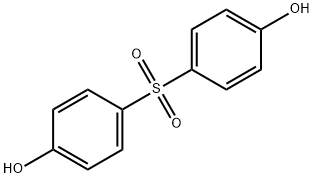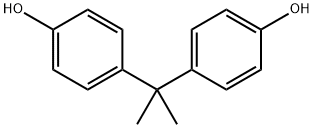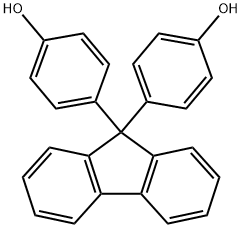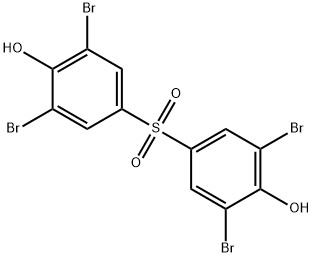Hydrogenated bisphenol A (HBPA)
Synonym(s):2,2-Bis(4-hydroxycyclohexyl)propane;4,4′-(Propane-2,2-diyl)dicyclohexanol;Dodecahydrobisphenol A;Perhydrobisphenol A
- CAS NO.:80-04-6
- Empirical Formula: C15H28O2
- Molecular Weight: 240.38
- MDL number: MFCD00019334
- EINECS: 201-244-2
- SAFETY DATA SHEET (SDS)
- Update Date: 2025-07-16 09:55:25

What is Hydrogenated bisphenol A (HBPA)?
Description
2,2-Bis(4-hydroxycyclohexyl)propane, also known as 4,4'-Isopropylidenedicyclohexanol, is a crystalline, colorless, and odorless compound. The conformation of the cyclohexane rings gives rise to cis-cis, cis-trans and trans-trans isomers. The industrial product is a mixture of these stereoisomers. The physical properties depend on the relative amounts of the isomers present. The trans-trans compound has the lowest energy and is formed from the other isomers at higher temperature. It has the lowest solubility in solvents such as methanol, butanol, and acetone and has the highest melting point of these isomers.
The Uses of Hydrogenated bisphenol A (HBPA)
4,4'-isopropylidenedicyclohexanol is unsaturated polyester resin, epoxy resin raw materials, especially as glass, steel, artificial marble bathtub, plating tank and other components, and has a water resistance, chemical resistance, thermal stability and light stability.
Production Methods
4,4'-Isopropylidenedicyclohexanol is produced by hydrogenation of bisphenol A, 2,2-bis(4-hydroxyphenyl)propane, an industrially important compound made from acetone and phenol (Phenol Derivatives). Bisphenol A is hydrogenated at about 10-30 MPa and at 150-250 ℃ on a nickel, cobalt, or ruthenium catalyst.
Flammability and Explosibility
Non flammable
Structure and conformation
4,4' -Isopropylidenedicyclohexanol (HBPA), hydrogenated from bisphenol A (BPA), is a promising and revealing alicyclic candidate to offer diamine or dianhydride monomers. Due to the different spatial conformations of hydroxyls, HBPA has three isomers, including H' BPA, H''BPA, and H'''BPA, and their contents are 47%, 45%, and 8%, respectively. However, few reports about nonplanar HBPA-based polyimides were found, probably because of the difficulty separating HBPA isomers[1-2].
References
[1] Z. Hou. “Soluble copolyimides containing 4,4′-isopropylidenedicyclohexanol (HBPA) isomer units: Synthesis, characterization, thermal, mechanical, and optical properties.” High Performance Polymers 32 1 (2019): 406–417.
[2] Zhiming Mi. “Transparent and soluble polyimide films containing 4,4′-isopropylidenedicyclohexanol (Cis-HBPA) units: Preparation, characterization, thermal, mechanical, and dielectric properties.” Journal of Polymer Science Part A: Polymer Chemistry 56 18 (2018): 2115–2128.
Properties of Hydrogenated bisphenol A (HBPA)
| Melting point: | 187 °C(Solv: benzene (71-43-2); ethanol (64-17-5)) |
| Boiling point: | 230-234 °C14 mm Hg(lit.) |
| Density | 1.048±0.06 g/cm3(Predicted) |
| vapor pressure | 0.001Pa at 25℃ |
| Flash point: | >230 °F |
| solubility | Insoluble in water |
| form | powder to lump |
| pka | 15.01±0.40(Predicted) |
| color | White to Almost white |
| Water Solubility | 192mg/L at 20℃ |
| CAS DataBase Reference | 80-04-6(CAS DataBase Reference) |
| EPA Substance Registry System | Cyclohexanol, 4,4'-(1-methylethylidene)bis- (80-04-6) |
Safety information for Hydrogenated bisphenol A (HBPA)
| Signal word | Warning |
| Pictogram(s) |
 Exclamation Mark Irritant GHS07 |
| GHS Hazard Statements |
H319:Serious eye damage/eye irritation |
| Precautionary Statement Codes |
P305+P351+P338:IF IN EYES: Rinse cautiously with water for several minutes. Remove contact lenses, if present and easy to do. Continuerinsing. |
Computed Descriptors for Hydrogenated bisphenol A (HBPA)
Hydrogenated bisphenol A (HBPA) manufacturer
G C Int'L
New Products
4,4-Difluoropiperidine hydrochloride tert-butyl 9-methoxy-3-azaspiro[5.5]undecane-3-carboxylate Indole Methyl Resin N-Isopropylurea N,N-Dicyclohexylcarbodiimide(DCC) MELDRUMS ACID 5-METHYLISOXAZOLE-4-CARBOXYLIC ACID Magnessium Bis glycinate Zinc ascorbate 1-bromo-2-butyne 2-acetamidophenol 9(10H)-anthracenone Erythrosin B, 4-Piperidinopiperidine 2-((4-morpholinophenylamino) (methylthio) methylene) malononitrile 2,4-dihydroxybenzaldehyde 3-(4-morpholinophenylamino)-5-amino-1H-pyrazole-4-carbonitrile Methyl 2-methylquinoline-6-carboxylate 2,6-dichloro-4-nitropyridine 4-Bromo-2-chlorobenzonitrile 2-(benzylamino)acetic acid hydrochloride 4-(tert-Butoxycarbonylamino)but- 2-ynoic acid 3,4-dihydro-2H-benzo[b][1,4]dioxepine 1-Phenyl-1-cycloprppanecarboxylicacidRelated products of tetrahydrofuran








You may like
-
 2,2-Bis(4-hydroxycyclohexyl)propane (mixture of isomers) CAS 80-04-6View Details
2,2-Bis(4-hydroxycyclohexyl)propane (mixture of isomers) CAS 80-04-6View Details
80-04-6 -
 Hydrogenated bisphenol A CAS 80-04-6View Details
Hydrogenated bisphenol A CAS 80-04-6View Details
80-04-6 -
 4,4′-Isopropylidenedicyclohexanol, mixture of isomers CAS 80-04-6View Details
4,4′-Isopropylidenedicyclohexanol, mixture of isomers CAS 80-04-6View Details
80-04-6 -
 Hydrogenated Bisphenol A, Industrial, Packaging Type: DrumView Details
Hydrogenated Bisphenol A, Industrial, Packaging Type: DrumView Details
80-04-6 -
 3-(4-amino-1-oxoisoindolin-2-yl)-1-methylpiperidine-2,6-dione 98%View Details
3-(4-amino-1-oxoisoindolin-2-yl)-1-methylpiperidine-2,6-dione 98%View Details -
 20677-73-0 (2,2-diethoxyethyl)methylamine 98%View Details
20677-73-0 (2,2-diethoxyethyl)methylamine 98%View Details
20677-73-0 -
 3-(4-(hydroxyamino)-1-oxoisoindolin-2-yl)piperidine-2,6-dione 98%View Details
3-(4-(hydroxyamino)-1-oxoisoindolin-2-yl)piperidine-2,6-dione 98%View Details -
 57381-49-4 2-bromo-4-chlorobenzonitrile 98%View Details
57381-49-4 2-bromo-4-chlorobenzonitrile 98%View Details
57381-49-4
